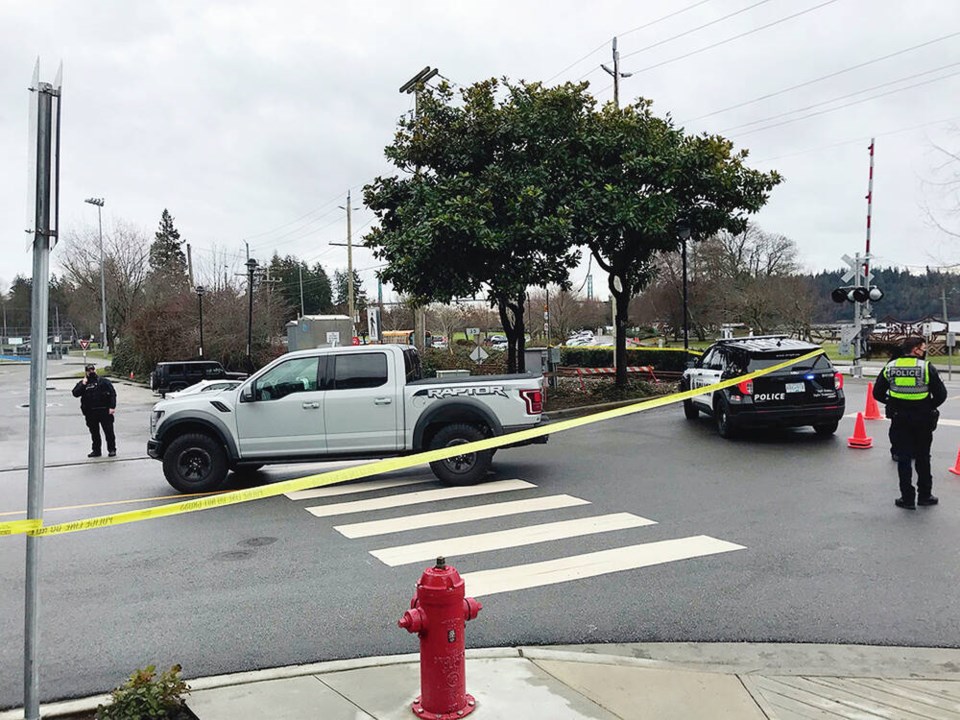The New York Times recently took an in- depth look at why pedestrian deaths are skyrocketing in the U.S. Their research should serve as a warning to us north of the 49th around pedestrian and road safety in our ever growing communities.
Throughout the 1980s, 1990s and early 2000s, pedestrian road deaths in the U.S. were declining noticeably. That all changed in 2009.
Pedestrian deaths started increasing dramatically to the point where, in 2021, 3,000 more pedestrians were killed that year compared with 2009. In 2022, according to the Governors’ Highway Association, 7,508 pedestrians were killed on U.S. roads — a 40-year high.
In Canada, we lose about 300 pedestrians to road incidents each year with B.C. accounting for around 50 to 60 of that total.
The U.S. basically leads the developed world in pedestrian deaths with rates 50% higher than those of Canada, Australia and Japan.
There have been reams of studies on this issue since 2000, but The New York Times’s research boiled the problems down to a few basic issues.
Pedestrians are dying in the dark. Eighty-five per cent of the U.S. pedestrian deaths are occurring at night. But the problem isn’t as simple as just an absence of light and the need for pedestrians to be more visible. There are other complicated and deadly factors at work.
Since the early 2000s, the availability of the personal cellphone has shot up exponentially. Today, people we know who don’t have cellphones are topics of coffee shop gossip.
Drivers are distracted more at night. Data usage studies found that Americans are using their phones and the array of electronic touch devices now built into their vehicles more than in other countries and they’re using them more at night. One theory is that drivers continue to work while driving home. Distraction coupled with less pedestrian visibility dramatically increases the risk potential.
A manual stick shift is safer. In the context of distraction, driving an automatic transmission vehicle frees up a hand to plunk away at that distraction device. Shifting gears in a manual vehicle is a two-handed operation, causing much less opportunity to use electronic devices.
Unfortunately, only 1% of vehicles now built in North America have manual transmissions. In Europe, 70% to 75% of vehicles still come as a standard shift.
Bigger is not better for pedestrians. There has been a steady rise in the popularity of larger vehicles, particularly in the pickup truck and SUV classes. Pedestrians struck by these larger vehicles are now being hit at the waist to shoulder level as opposed to the knee and leg level from small vehicles. The result is more serious, often catastrophic injuries.
Urban planners and safety officials are also starting to worry about the extra weight factor around electric vehicles. For example, the batteries alone powering the new Tesla pickup truck weigh nearly as much as a Toyota Corolla.
Lack of pedestrian infrastructure is dangerous. Much of the U.S. urban southwest was developed after the rise in mass market availability of the automobile. Consequently, city planning was all about the car at the expense of pedestrian movement and safety. Large arterial streets led to massive strip mall parking lots with little attention paid to anything other than driving to get there.
This jibes with my own experience. A few years ago, we tried to walk from our hotel in a southern U.S. city to a nearby restaurant — a five-minute stroll. It was nearly impossible. No sidewalks and no crosswalks to be found. Instead, we had to scramble over raised medians, garden beds and parking lots to get to the front door.
This has played out especially in Florida, with its plentiful high-speed arterial roads, dearth of crosswalks and minimal sidewalks. Since 2009, pedestrian deaths there have increased by 70%.
Older people are especially vulnerable. As our population ages, it follows that pedestrians are also older. Elderly people are much more vulnerable physically to catastrophic impacts and are contributing to the rise in U.S. pedestrian deaths.
Homelessness is also a factor. The rise of homelessness is playing out in all North American cities. More people, many of whom are intoxicated or mentally disoriented, walk into danger on busy streets. As more people become affected by poverty, they are forced to walk everywhere, often at night to work a shift and then to head back home. Making those journeys on busy arterial roads is often treacherous. In the U.S., pedestrian deaths are disproportionately found in poorer neighbourhoods.
With Canada now growing faster than ever, the U.S. experience offers us a view to the problems we’ll face if a thoughtful, holistic approach isn’t taken to road and pedestrian safety. Citizen safety is government’s number one priority.
Safe streets then should be at the heart of all urban planning.
>>> To comment on this article, write a letter to the editor: [email protected]



